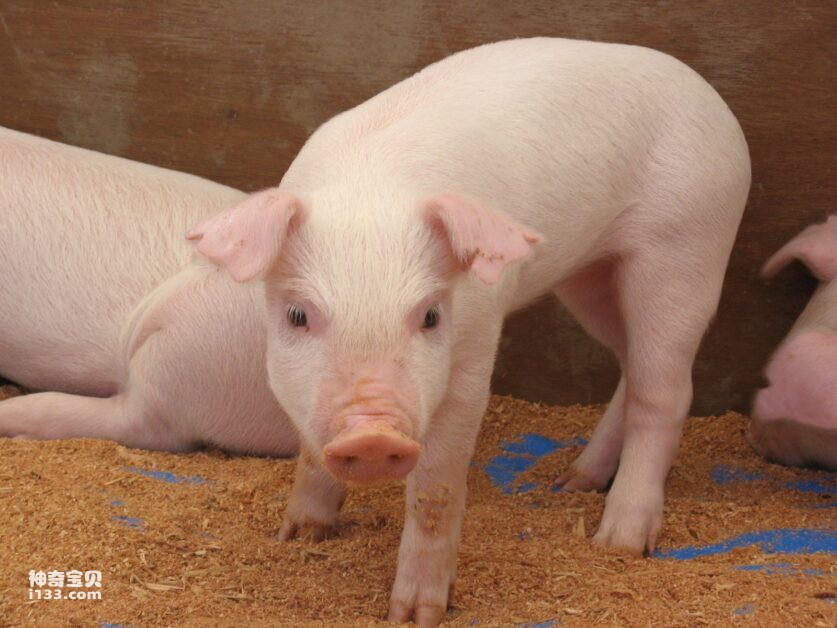Pig is a common mammal, belonging to the Suidae family (Suidae) of the order Artiodactyla, and is mainly distributed around the world. The following is a detailed introduction to pigs and their living habits:

Body size: The body size of pigs varies greatly, ranging from small dwarf species to large wild boar species. The body length is usually between 1-2 meters and the weight can reach hundreds of kilograms.
Skin and Hair: Pigs have thick, wrinkled skin that is usually covered with short, stiff hair that comes in a variety of colors and may have spots or stripes on some breeds.
Head: The pig's head is relatively large, with a broad muzzle and a strong bite force. The head usually has a pair of ears.
Food habits: Pigs are omnivores, and their food includes plant foods (such as roots, grass leaves, fruits, etc.) and animal foods (such as insects, small animals, etc.).
Social structure: In the wild, pigs often live in groups, usually consisting of sows and young pigs, sometimes with a leading male pig. In a livestock environment, pigs can also live alone.
Habitat: Pigs live in a wide range of environments, including forests, grasslands, farmland and other environments. Pigs will smear mud and water in mud and water to help themselves cool down and stay clean.
Reproduction: Sows usually give birth in the spring, with a large number of piglets per litter. The piglets grow up through the sow’s feeding after birth.
IQ: Pigs are very intelligent and curious animals, able to utilize resources in their environment and exhibit learning abilities similar to those of dogs and other animals.
Economic significance: Pigs are one of the most important livestock animals for humans and are used for food, leather, medicinal products, etc. Pig farming is of great economic importance worldwide.
Cultural significance: In different cultures, pigs have different symbolic meanings. In some places, pigs are regarded as a symbol of luck, prosperity or wealth.
Conservation and Breeding: Pigs are widely raised due to their economic value and importance, and there are many organizations dedicated to protecting wild pig populations from overhunting and habitat destruction.
Overall, as an important livestock animal, the pig's omnivorous nature, social structure, reproductive capacity and relationship with humans make it occupy an important position in agriculture and culture. I hope the above introduction will help you gain a deeper understanding of such interesting and versatile animals as pigs. If you have any other questions or need more information, please feel free to let me know.
animal tags: pig
We created this article in conjunction with AI technology, then made sure it was fact-checked and edited by a Animals Top editor.